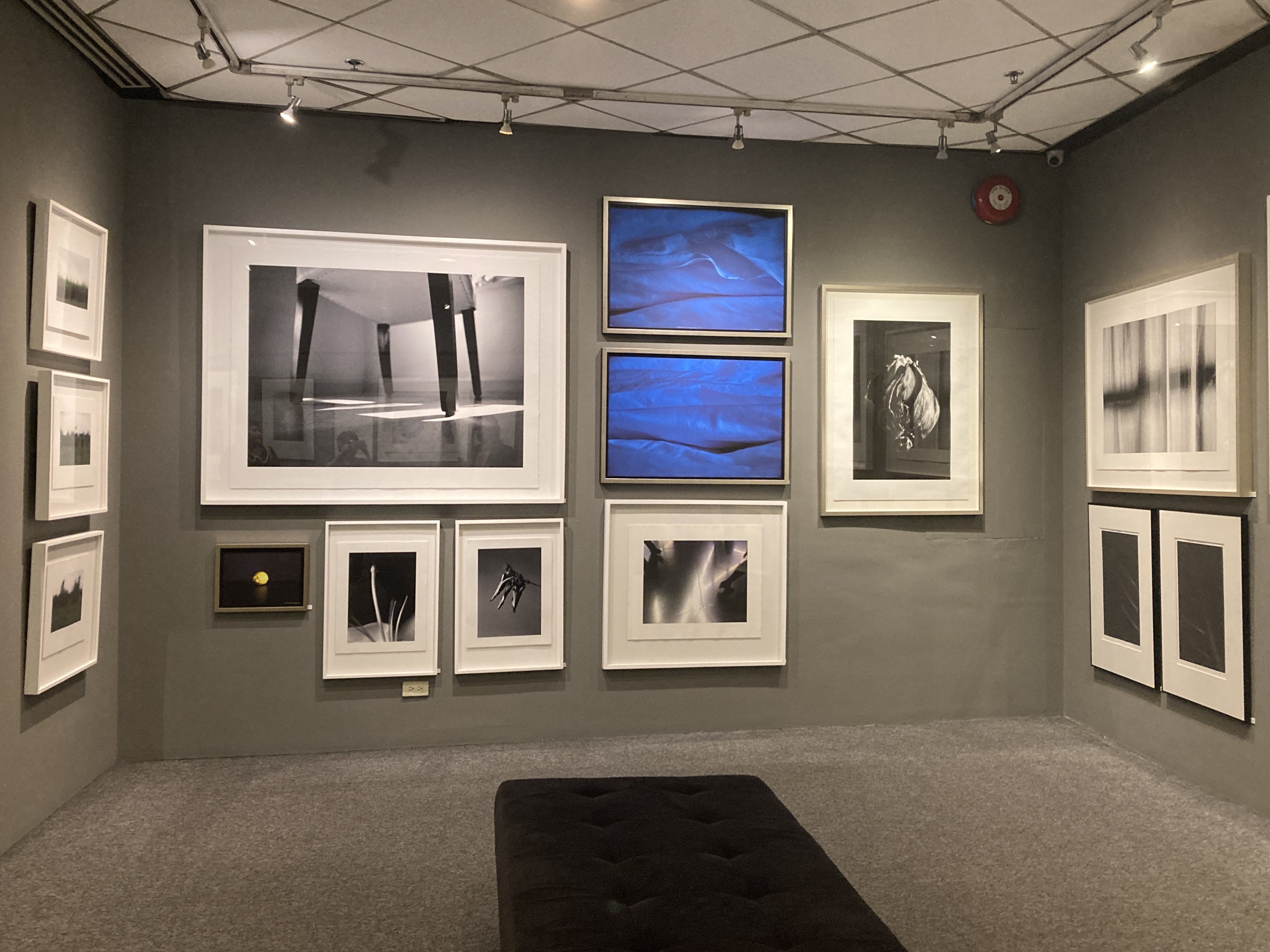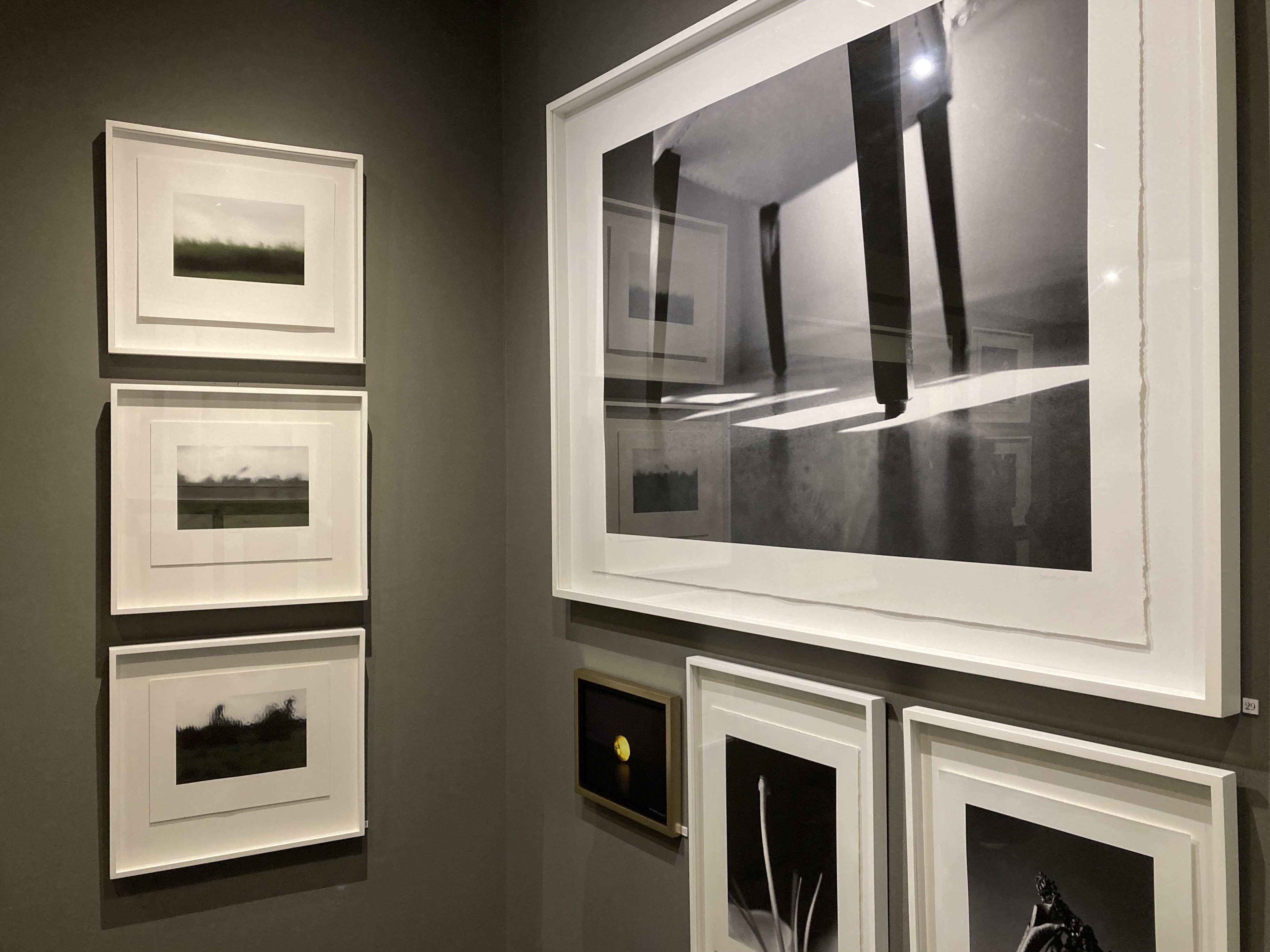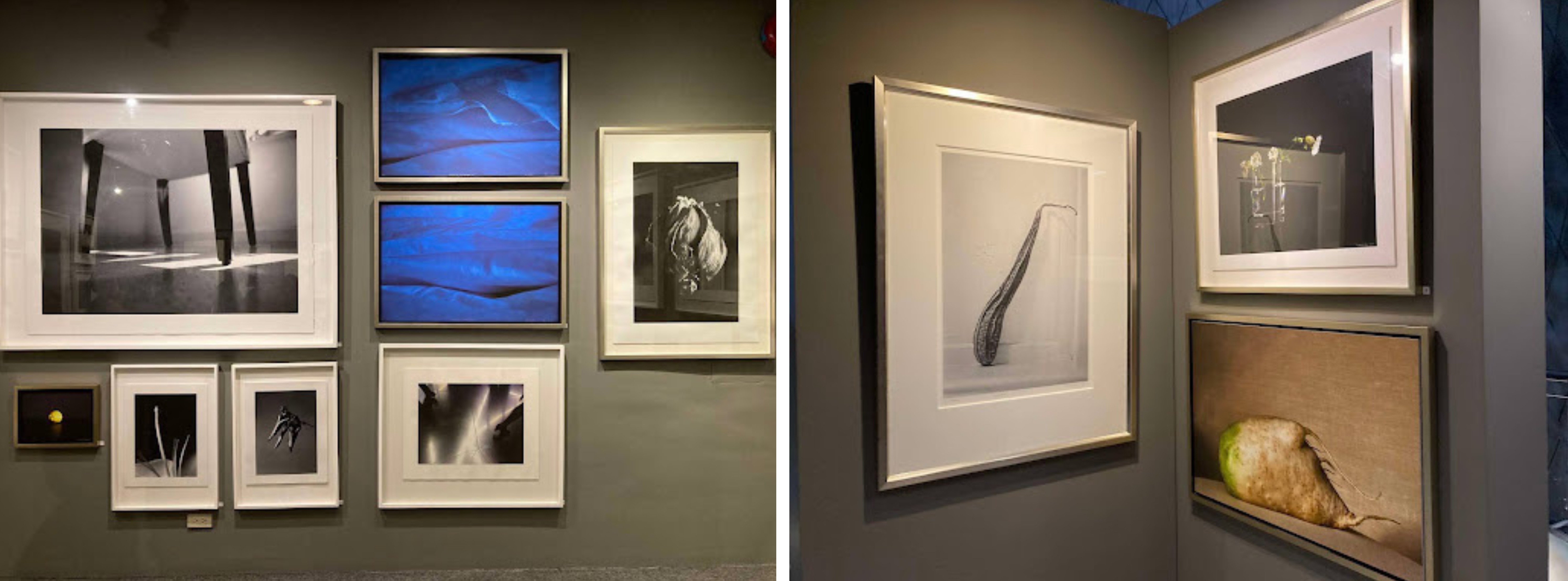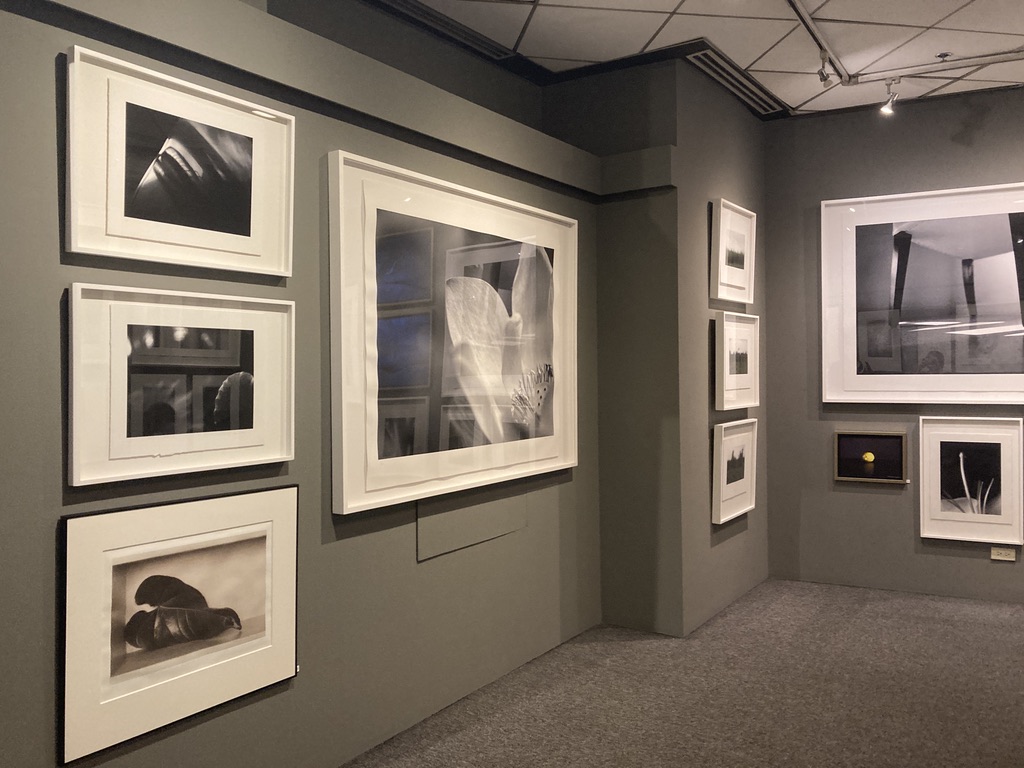In the midst of the bustling Makati Central Business District, artist Denise Weldon opened her exhibition titled Witness of the Quiet last February at the Yuchengco Museum. True to its name, it featured serene, minimalistic photographs of minute, everyday details: a hazy green landscape barely visible beyond rain-drenched windows, a woman’s heeled feet dangling over the subway floor, a bright yellow lemon glowing against a black kitchen countertop. Yuchengco Museum Director Jeannie Javelosa aptly described Weldon’s images as “visual haikus,” photographs of ordinary moments managing to capture a depth of feeling or tease a hidden meaning.
Curated by Migs Rosales, Witness of the Quiet was a semi-survey of Denise Weldon’s photography across 30 years. According to the introductory text, the exhibition chronicled the artist’s distinctive engagement with the medium, where objects and life forms often become almost one and the same. It also revealed her spontaneous approach to photography, as she takes pictures everywhere and anytime, often without the assistance of a formal studio.
Upon meeting Denise Weldon, one is immediately struck by her calming persona. She is a soft-spoken woman who easily discusses art and philosophy. In addition to being so well-read, well-traveled, and highly-accomplished—a photography and art career spanning four decades, a judge for various photography competitions—she actively expresses gratitude for the people she works with, without whom her exhibitions would not be possible. She practices yoga, meditation, and mindfulness, and loves to share the experience with others. After her artist talks and exhibition walkthroughs for Witness of the Quiet, she hosts a meditation session with the attendees.
A high school photography class back in Thailand introduced her to the medium, and she mastered the art of looking by photographing the world around her. While she is American, she grew up all over Southeast Asia, and being surrounded by multiculturalism from a young age shaped her worldview. Her real life Zen-like philosophy is mirrored in her artworks. To be Zen is to be grounded and aware of reality, and to observe without judgment, only compassion. In a previous article, she once wrote, “[...] the awareness of noise and silence in our days allows us to see ourselves more clearly, and from there conscious and awakened choices and changes may be made.”
Indeed, Weldon’s images reflect her awareness of the noise and silence of each moment, no matter how small. But it is this glimpse into her vision that sets her work apart.
During our interview, Weldon recounted a story from a photography class she once taught. She had assigned her students to take images of the things around them. The students all huddled over the same spots, taking pictures of the exact same thing. She laughed and said, “you have to see how you see the world.” That is, you specifically and nobody else. And Weldon sees the world in extraordinary ways.
For instance, her works titled “Sheets #3” and “Sheets #4” feature close-ups of rumpled bed sheets. With the interplay of sunlight and shadow on their bumpy surfaces, the bed sheets resemble mountains or sand dunes. In reality, the sheets were white, but the artist’s camera settings had accidentally rendered them into cerulean. “Stairwell” is a black and white photograph of a spiral staircase going upwards, but the framing makes it resemble a nautilus shell. In “Patola on Point,” another black and white photograph, a shriveled patola stands upright like some sort of sleek, modernist sculpture.
“Our bodies can be looked at like landscapes,” Weldon shares. It’s not just the human body; even her plant subjects are elevated through her framing. “Elephant Tree” features an indiscernible close-up of a tree trunk whose bark resembles freckles or pores on human skin. The tree trunk’s graceful, curved edges evoke a woman’s soft body. A monochrome close-up of a flower’s pistil reminds one of an insect’s antennae. Her images of fruits and flowers in vases bring to mind still life paintings of the Dutch masters. The flowers are stark and colorful, carefully posed, and give off the impression that they are floating. No subject matter is too small or too subtle for her lens. If our bodies can be looked at like landscapes, then any body can be awe-inspiring and worthy of memorialization through a photograph.
“Maybe it is God’s plan for the light to hit the bedsheets a certain way and for me to notice it,” Weldon adds. “People ask: why take a picture of it? Why not?”
Mindfulness is the act of paying attention to your body and your environment in the present. It encourages us to observe ourselves without judgment. It inspires us to notice the things we take for granted. Perhaps it is Weldon’s commitment to mindfulness that allows her to craft beautiful images from something as simple as sunlight shining through the curtains, or a shriveled fruit on the kitchen counter.
When asked about her intention behind her photographs, Weldon answered that she was interested in the wonder of the outcome. “I just take photographs and if it brings people to peace and meditation that cheers me up,” she explained.
The Witness of the Quiet exhibition evoked feelings of meditative silence in me. Standing in the room surrounded by black and white photographs made me feel the need to quiet down and inspect the images closely to figure out what they were, or admire what they had been transformed into. Additionally, two posters with the words YOU ARE hung near the entrance. These were repurposed from Weldon’s 2010 group show Where are you going?, held by Altro Mondo @ The Picasso. However, in Witness of the Quiet, the contracted words had a more existential bent. You are what? You are a human being. You are alive. You exist. In meditation, we focus on the now, on our existence as a body on the mortal plane. To meditate is to become a witness to one’s interiority.
Nearing the end of our interview about her art practice, Weldon suddenly mused that “perfection is death.” After all, to be alive is to be imperfect. To be human is to be imperfect. Weldon’s art reminds us to appreciate the quiet, everyday moments. It reminds us to occasionally slow down during our fast-paced lives and breathe, just breathe, because there is beauty in imperfection and in the ordinary.




